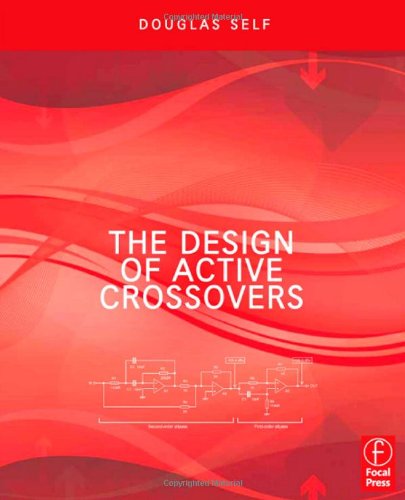The Design of Active Crossovers pdf
Par noguera lisa le mardi, août 9 2016, 05:21 - Lien permanent
The Design of Active Crossovers by Douglas Self


The Design of Active Crossovers Douglas Self ebook
Page: 605
Format: pdf
ISBN: 0240817389, 9780240817385
Publisher: Focal Press
I presume you use some sort of easily adjustable active crossover for design to make design adjustments easier. Internal active crossover and newly designed dual amplifiers ensure a broad, extremely accurate frequency response, clear imaging with a wide sweet spot, high power handling and detailed highs and mids. And, as the title will tell you, i am totally new to all this DIY speaker crossover lark. I believe the title says it all. If you only require filters which can be made passive then passive crossovers can be great but otherwise (if you require other filter types) then you have a design problem. These articles introduce a systematic approach to the design of very low distortion push-pull output stage for audio power amplifiers. One of the more unique aspects of the ULP is the utilisation of an active crossover rather than the traditional passive crossover found in 95% of commercial designs. Lets start by describing an active crossover. Almost any modern receiver allows us to use fully active crossover circuits if the speakers are designed to use them properly. There are a number of advantages to Resolv active monitors. I would like to just pop the question first, I run a fairly high performance audio system in my home and would like to switch over from passive. The EbenLee Audio Mini Cube and MC2 SE speakers were designed to be used this way. And if you have active speakers (mains and subs) with digital inputs are your considerations still valid having the additional benefit of active crossover designs in those active speakers? Improving high-end active speaker performance using digital active crossover filters.